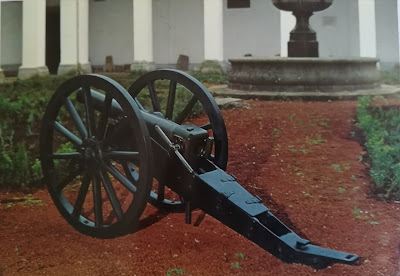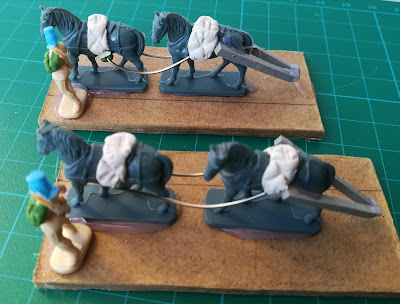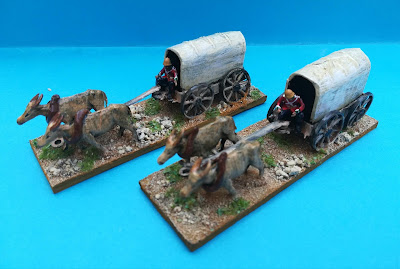The Lancha-Canhoneira Capelo is finished and painted. I used the colour scheme of scale model present at the Museu da Marinha (Navy Museum) in Lisbon.
I added seven crew members, all of them conversions. The legs are from Revell Union soldiers brandishing their rifles and torso and heads are from Australian copies. Their arms were then heated and twisted until they looked like manning a gun. Some have a small shell hardly visible on the photos.
The flag is from the Internet and is wrapped to the pole with metal wire.
I chose not to place any rigging on the boat as it would break easily on handling due to the small size of the model. Like this it became sturdy and detailed enough.
Batalhão de Caçadores 2 forming square. This tactic was used by the Portuguese on all occasions, marching (the right column would be slightly forward so the top part could bend left and form a square, the same happening to the bottom of the left column who would bend right), camping and fighting. The Portuguese army in Mozambique was around 2.600 in its peak against a total 60.000 warriors in the ranks of Gungunhana so this defensive tactic, used also in the offensive, was well needed.
Most of the figures are Foreign Legion Esci with some British colonials mixed in.
The Portuguese uniform had a black kepi, blue coat and white trousers. In africa the kepi was covered with a white cotton cover and the white fatigue coat used instead.
Only the officers used the blue dolman even if this meant a better target for the enemy.
The Polícia de Lourenço Marques (nowadays Maputo) was the best unit of the Portuguese army in this campaign and they even managed to restaure the broken side of the Marracuene square with a daring counter-attack something unique in Colonial warfare.
Caçadores 3 da África Oriental. These (mostly) Angolans had a similar uniform to the metropolitan units but usually they weren't wearing boots and the rest of the uniform had sometimes home-made pieces, specially trousers.
Figures are mostly Esci but to give different positions I used many legs from Revell Australians who donated their heads to this cause.
Batalhão de Caçadores 3. In 1895 the broad-brimmed hat starts to arrive with the new Metropolitan troops and becomes a symbol of this campaign.
Again figures are Foreign Legion Esci with Australian heads from Revell. Also some assorted legs were used to increase variety.
Regimento de Infantaria 2. Again a mix of all plastics described above. This line of men, with the first rank kneeling, was the most suitable to form square under attack.
Esquadrão de Lanceiros 1 of Captain Mouzinho de Albuquerque. The hats could have one of the side of the brim up, specially officers hats, but pictures of this campaign show them looking like Confederates ones at the end of the Civil War...
As I told you on the previous post these models have pieces from many origins and legs made of GreenStuff. Mouzinho de Albuquerque itself is next to the cornet in its blue dolman.
B.E.M artillery pieces. WWII buffs will recognize the artillerymen as Germans from the PSC PAK38 A/T gun set. This set can easily spare many figures as each of the four PAK38 has six figures when for wargamers only three are generally used.
The tows for the B.E.M's. Airfix horses with Esci figures heavily converted.
The Nordenfeld MG's with its tow consisting of just one mule.
Again some of the crew are PSC with new headgear.
Next: wether back to Liberators in 10mm or to my last Gettysburg Union division made from the new StreletsR figures.



















































